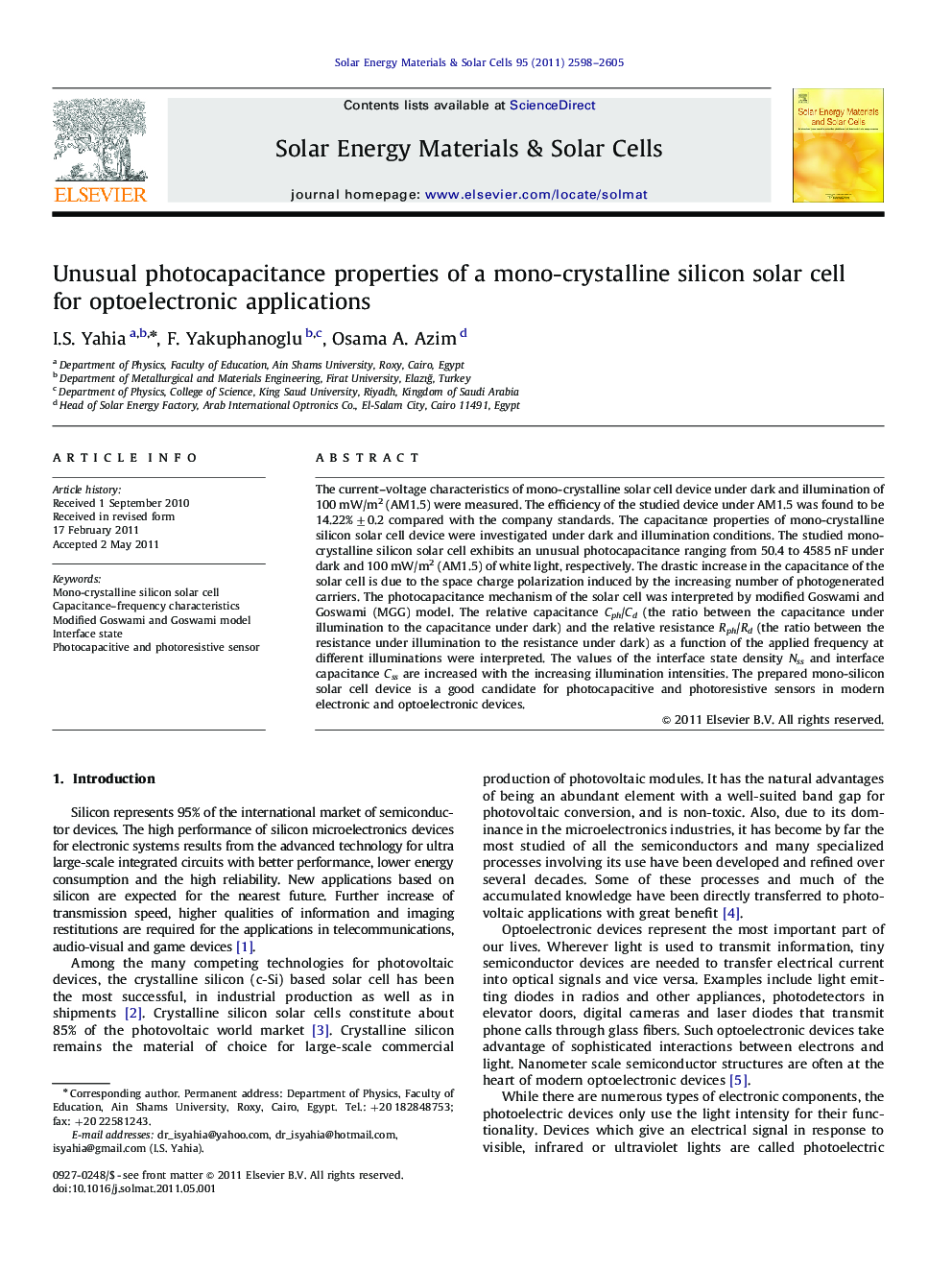| Article ID | Journal | Published Year | Pages | File Type |
|---|---|---|---|---|
| 78719 | Solar Energy Materials and Solar Cells | 2011 | 8 Pages |
The current–voltage characteristics of mono-crystalline solar cell device under dark and illumination of 100 mW/m2 (AM1.5) were measured. The efficiency of the studied device under AM1.5 was found to be 14.22%±0.2 compared with the company standards. The capacitance properties of mono-crystalline silicon solar cell device were investigated under dark and illumination conditions. The studied mono-crystalline silicon solar cell exhibits an unusual photocapacitance ranging from 50.4 to 4585 nF under dark and 100 mW/m2 (AM1.5) of white light, respectively. The drastic increase in the capacitance of the solar cell is due to the space charge polarization induced by the increasing number of photogenerated carriers. The photocapacitance mechanism of the solar cell was interpreted by modified Goswami and Goswami (MGG) model. The relative capacitance Cph/Cd (the ratio between the capacitance under illumination to the capacitance under dark) and the relative resistance Rph/Rd (the ratio between the resistance under illumination to the resistance under dark) as a function of the applied frequency at different illuminations were interpreted. The values of the interface state density Nss and interface capacitance Css are increased with the increasing illumination intensities. The prepared mono-silicon solar cell device is a good candidate for photocapacitive and photoresistive sensors in modern electronic and optoelectronic devices.
Graphical abstractFigure optionsDownload full-size imageDownload as PowerPoint slideHighlights► The efficiency of mono-crystalline solar cell device was 14.22%±0.2 under AM1.5. ► Unusual photocapacitance ranging from 50.4 to 4585 nF under dark and 100 mW/m2 (AM1.5) of white light, respectively, was measured. ► Modified Goswami and Goswami (MGG) model was used to interpret the photocapacitance of this device. ► The relative capacitance Cph/Cd and the relative resistance Rph/Rd were calculated and interpreted. ► Interface state density Nss and interface capacitance Css are calculated at different illuminations.
